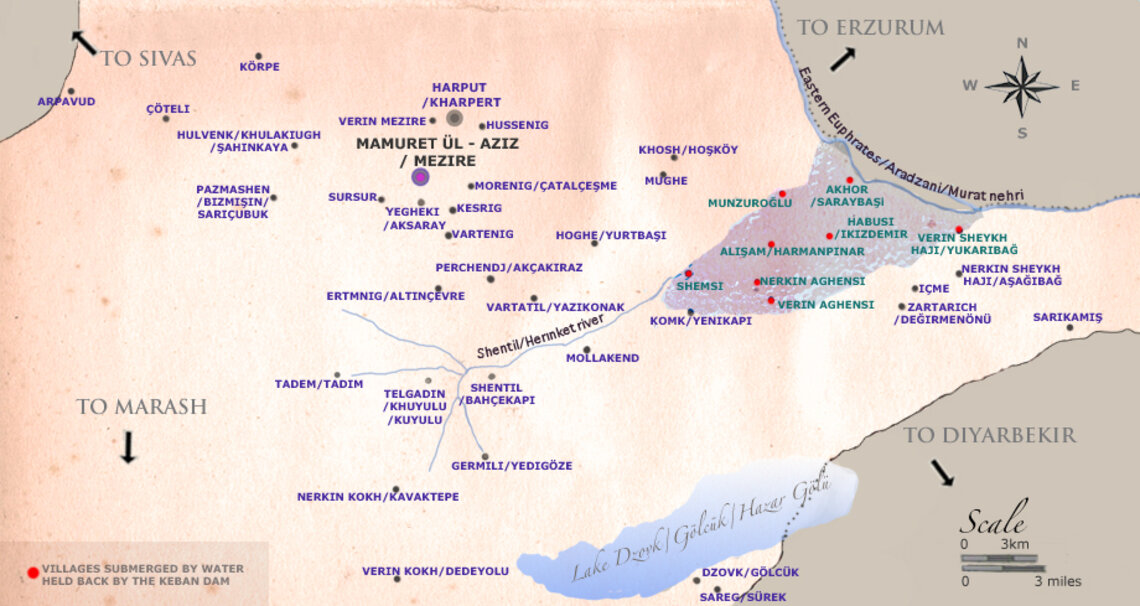The Harput plain
Houshamadyan, under this heading, will reflect on the Armenian places in the plain. Under the Ottoman administrative system, this area accords to the Harput sub-district (kaza) which is part of the province (vilayet) of Mamuretül-aziz.
This area, during the Ottoman era, has had a dense population of Armenians located in villages and towns. Its main towns are Harput and Mezire (Mamuretül-aziz) and, around them, tens of villages and small towns inhabited by Armenians. If Armenian life in the villages is characterised by a rich agricultural tradition, the trades in the small and large towns have greatly developed, and by the end of the 19th century some of them have reached industrial standards.
The educational and cultural life in the Harput plain is just as rich. From the beginning of the second half of the 19th century, many Armenian mixed schools, from primary to the completion of secondary standard, have been opened in the towns of Harput and Mezire (Mamuretül-aziz). Country areas have also been endowed with a whole network of Armenian schools. Cultural life in this sense is also living an unprecedented upsurge that is gradually spreading its positive effects to other Armenian-inhabited towns and villages to be found in the same region. Naturally, the swift decrease in illiteracy and school education has opened doors for the development of the plain of Harput’s Armenians’ social life and economy.
The plain of Harput however has been, during the last decades of the Ottoman era, the theatre of the worst forms of anti-Armenian violence. The influence of the local aghas and begs is still very great in rural areas, and they dominate many villages’ means of production. The government’s slackness and the absence of the rule of law often leave the region’s Armenian and Kurdish peasantry in a defenseless position. In other words the situation was ripe for anti-Armenian violence to be fomented. All this has provided the opportunity for a flow of emigration, especially from the Armenian villages in the Harput plain, to the prosperous, large Ottoman towns and cities, or even as far as the United States of America.
So this and subjects linked to local Armenian life generally are what we will reflect on in the pages allotted to the plain of Harput.
Houshamadyan’s editorial board has, during the preparation of these pages, enjoyed the collaboration of a number of individuals, to whom we express our grateful thanks. They are: Craig Wallen, Hourig Zakarian, G. M. Goshgarian, Nora Tashjian and Giro Manoyan. With the information, books, photographs and sound recordings they have provided, enriched the pages dedicated to the Harput plain.
